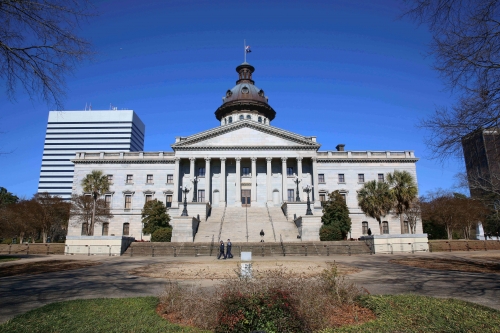A Rainy Day Update
In our Palmetto Playbook economic recovery manual, we set aside a sizable chunk of the Tax and Budget section to call for maintaining budget surpluses and filling state rainy day (“budget stabilization”) accounts.
What was the reason for our obsession with reserve funds?
Just this: in 2002, which was not that long ago, the State of South Carolina found itself sitting on $0 of reserves. Then, in 2003 the state government bottomed out again.
So, what is the current situation? Have we learned anything? How does the Palmetto State stack up against the other 49 in terms of saving for fiscal catastrophes, both with emergency budget set asides and budget surpluses?
Just a few weeks ago, the Pew Foundation released its deep dive into how state rainy day funds and budget surpluses weathered the first year of the COVID 19 lockdown. Here is what their budget analyst found using data from NASBO, the National Association of State Budget Officers:
- In terms of days the state government would be able to operate on rainy day funds alone, the winner by far was Wyoming at a whopping 354 days. It is an amazing feat to have nearly a year’s worth of dough in the bank. South Carolina came in at 50 days, which earned us the rank of #15 in the country. The Palmetto State was #2 in the Southeast (second only to Georgia).
- In dollars of rainy day funds in the bank, massive California had the most dollars in rainy day accounts at $15 billion. South Carolina came in at #16 with $1.18 billion, which was #4 in the Southeast. We were bested by Georgia, Florida, and Tennessee.
- In terms of percentage of the state budget socked away in emergency accounts, Wyoming is again by far #1 with their contingency funds representing 97% of their state budget. South Carolina came in at #9 in the country and #1 in the Southeast.
All of this means that fiscal forecasters at RFA/BEA are making accurate, conservative predictions and that the reserve accounts (the Capital Reserve Fund, the General Reserve Fund, and a new Pandemic Reserve Fund) are being fully-funded. It also means that our economy didn’t shut completely during COVID and opened quickly relative to others states. Were a deep recession or depression to come, only Wyoming might survive in the short run. But here in the Palmetto State, having saved for a rainy day would give us a fighting chance that we didn’t have in 2002, 2003, and 2009.
All this means it is a good time to talk about comprehensive tax reform, as Palmetto Promise Institute has been calling for since 2015. North Carolina just passed a $2 billion tax cut that also provides $1 billion in federal COVID aid to businesses. Our Republican majority should do the same.
The taxpayers of South Carolina deserve a tax code that is simpler, fairer, and more likely to generate economic growth. The time is now.






